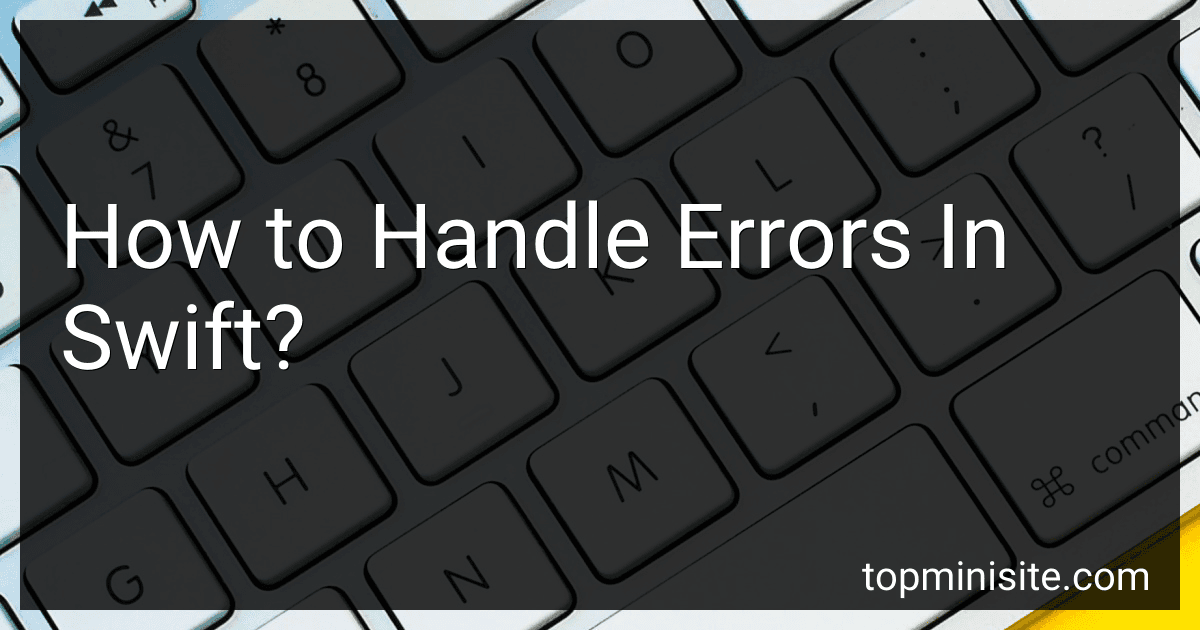Best Swift Error Handling Guides to Buy in December 2025
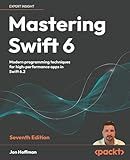
Mastering Swift 6: Modern programming techniques for high-performance apps in Swift 6.2


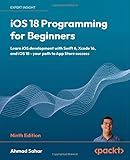
iOS 18 Programming for Beginners: Learn iOS development with Swift 6, Xcode 16, and iOS 18 - your path to App Store success


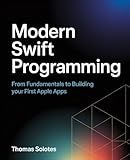
Modern Swift Programming: From Fundamentals to Building Your First Apple Apps


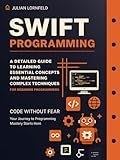
Swift Programming: A Detailed Guide to Learning Essential Concepts and Mastering Complex Techniques


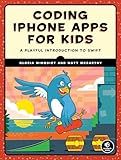
Coding iPhone Apps for Kids: A Playful Introduction to Swift



SwiftUI Cookbook: A guide for building beautiful and interactive SwiftUI apps



Mastering iOS 18 Development: Take your iOS development experience to the next level with iOS, Xcode, Swift, and SwiftUI



Swift Programming in easy steps: Develop iOS apps - covers iOS 12 and Swift 5


Errors are an inevitable part of programming, and handling them properly is crucial for building robust and reliable applications. In Swift, errors are represented by instances of types that conform to the "Error" protocol.
There are several ways to handle errors in Swift. One common approach is to use "do-catch" blocks to catch and handle errors that are thrown within a specific block of code. This allows you to gracefully handle errors and respond to them in a way that makes sense for your application.
Another approach is to use "try?" and "try!" to handle errors. With "try?", the code will return an optional value that is "nil" if an error is thrown, allowing you to handle the error gracefully. With "try!", the code will crash if an error is thrown, so it's important to use this carefully and only when you're confident that an error won't occur.
You can also use "defer" statements to defer the execution of code until the current scope is exited, which can be useful for cleanup tasks in the event of an error.
Overall, handling errors in Swift involves understanding how errors are represented, using "do-catch" blocks, "try?" and "try!", and "defer" statements to handle errors gracefully and build more reliable applications.
What is the difference between do-try-catch and try? in Swift?
In Swift, both do-try-catch and try are used for error handling, but they serve different purposes.
try is used to attempt an operation that could potentially throw an error. If the operation throws an error, it will propagate up the call stack until it is caught by a do-try-catch block or handled in some other way. In this way, try is a way to handle errors in a more concise manner without the need for a full do-try-catch block.
On the other hand, do-try-catch is used to explicitly handle errors by enclosing a block of code that can potentially throw errors. This block of code is wrapped in a do clause, and any errors thrown within this block can be caught and handled in the catch clause.
In summary, try is used to attempt an operation that could potentially throw an error, while do-try-catch is used to explicitly handle errors thrown within a block of code.
What is the importance of error handling in Swift programming?
Error handling in Swift programming is important because it allows developers to manage and recover from unexpected or exceptional situations that may occur during the execution of their code. By using error handling mechanisms such as throwing and catching errors, developers can prevent their applications from crashing or behaving unexpectedly when errors occur. This helps to improve the stability and reliability of the code, making it easier to troubleshoot and maintain in the long run. Additionally, error handling provides a way to communicate and handle errors in a structured and informative manner, improving the overall user experience of the application.
What is the best practice for error handling in Swift?
The best practice for error handling in Swift is to use Swift's native error handling mechanism, which involves throwing, catching, and propagating errors using the throw, do-catch, and try keywords. Here are some best practices for error handling in Swift:
- Use the throw keyword to signal that an error has occurred within a function or method.
- Use the throws keyword in the function or method declaration to indicate that it can potentially throw an error.
- Use the try keyword to call a function or method that can potentially throw an error.
- Use the do-catch statement to catch and handle errors thrown by functions or methods.
- Use specific error types to provide detailed information about the error that occurred.
- Use Error protocol or create custom error types to represent different error scenarios.
- Handle errors at the appropriate level of granularity, catching errors closer to where they occur and handling them appropriately.
- Use defer to perform cleanup tasks before exiting the scope, whether an error occurred or not.
- Consider using try? or try! in cases where you want to ignore or force unwrap errors, but be cautious as it can lead to unexpected behavior.
- Use fatalError() or preconditionFailure() for unrecoverable errors that should crash the application.
By following these best practices, you can ensure that your Swift code is robust, maintainable, and easily debuggable when handling errors.
What is the try keyword used for in Swift?
The try keyword in Swift is used when calling a throwing function that can potentially throw an error. When you use try before calling a function that can throw an error, it means that you are aware that the function may throw an error and you are handling it appropriately, either by using do-catch blocks or passing the error up the call stack using try, do, catch, and throw keywords.
What is the role of do-try-catch in Swift error handling?
In Swift error handling, the do-try-catch pattern is used to handle errors that may occur during the execution of a block of code.
- The 'do' block contains the code that may potentially throw an error.
- The 'try' keyword is used before calling a throwing function or method inside the 'do' block.
- If an error is thrown, the execution of code inside the 'do' block is halted, and the error is propagated up the call stack.
- The 'catch' block is used to catch and handle the error that was thrown in the 'do' block. It contains the code to handle the error, such as logging the error, displaying an error message, or recovering from the error.
- Multiple 'catch' blocks can be used to handle different types of errors.
- The 'catch' block will only be executed if an error is actually thrown in the 'do' block.
Overall, the do-try-catch pattern provides a structured way to handle errors in Swift, allowing for more robust error handling in code.
